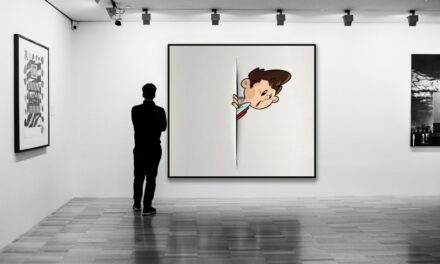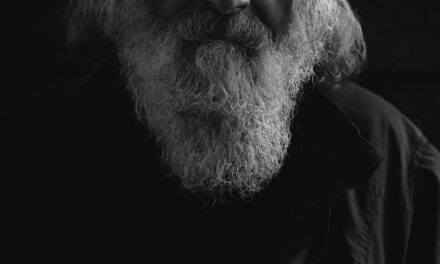Titian, born Tiziano Vecellio around 1488 in Pieve di Cadore, a small town in the Veneto region of Italy, emerged from humble beginnings. His early life was steeped in the natural beauty of the surrounding mountains and forests, which would later influence his vibrant use of colour and light. Little is known about his family, but it is believed that his father was a well-respected official, which may have afforded Titian some access to education and the arts.
At a young age, he moved to Venice, a city that was not only a hub of commerce but also a flourishing centre for the arts during the Renaissance. Here, he began his formal training as an artist, initially apprenticing with the renowned painter Giovanni Bellini, whose mastery of colour and composition would leave an indelible mark on Titian’s own style. As Titian honed his skills in Venice, he was also influenced by the works of other prominent artists of the time, including Giorgione, with whom he is often associated.
The two artists shared a close relationship, and it is believed that Titian collaborated with Giorgione on several projects. This period of apprenticeship and collaboration allowed Titian to absorb various techniques and styles, ultimately shaping his artistic identity. By the time he established himself as an independent artist in the early 1510s, he had already begun to develop a distinctive style characterised by rich colours, dynamic compositions, and a keen understanding of human emotion.
Summary
- Titian was born in the Republic of Venice in 1488 and received his early artistic training in the workshop of the mosaicist Sebastiano Zuccato.
- His artistic style was heavily influenced by the works of Giorgione, with whom he collaborated on several paintings, and he later developed his own distinctive use of colour and brushwork.
- Titian’s major works include “Bacchus and Ariadne,” “The Assumption of the Virgin,” and “Venus of Urbino,” and he received numerous commissions from the Venetian government, as well as from prominent figures such as the Holy Roman Emperor Charles V.
- Titian had a close relationship with his patrons, including the Venetian court and the Habsburg dynasty, and his ability to navigate the complex political landscape of the time contributed to his success as an artist.
- Titian was known for his innovative use of oil paint and his mastery of techniques such as chiaroscuro and sfumato, which had a lasting impact on the development of Western art.
- Titian’s legacy is evident in the work of later artists such as Peter Paul Rubens and Diego Velázquez, and his influence on art history is still felt today.
- Controversies surrounding Titian’s work include debates about the attribution of certain paintings and criticisms of his portrayal of female nudes, which some viewed as overly sensual.
- The Titian Renaissance in the 19th century saw a revival of interest in his art, with artists and collectors seeking to emulate his style and acquire his works.
Artistic Style and Influences
Titian’s artistic style is often described as a synthesis of the Venetian tradition and the innovations of the High Renaissance. His use of colour was revolutionary; he employed a technique known as “glazing,” which involved layering translucent paints to create depth and luminosity. This method allowed him to achieve a vibrancy that was unparalleled at the time.
His brushwork was also notable for its fluidity and spontaneity, giving his paintings a sense of immediacy and life. Unlike many of his contemporaries who adhered to strict outlines and precise details, Titian embraced a more painterly approach that celebrated the medium itself. Influences on Titian’s work were manifold.
The natural world around him played a significant role in shaping his artistic vision. He often drew inspiration from the landscapes of Venice and its surrounding areas, incorporating elements of nature into his compositions. Additionally, Titian was deeply influenced by classical mythology and literature, which he frequently referenced in his paintings.
His ability to blend these diverse influences into cohesive works is one of the hallmarks of his genius. Furthermore, the emotional depth he infused into his subjects set him apart from other artists; he had an uncanny ability to capture the human experience, whether through portraiture or grand historical narratives.
Major Works and Commissions
Throughout his prolific career, Titian produced an impressive body of work that includes portraits, religious scenes, and mythological subjects. One of his most celebrated pieces is “Assumption of the Virgin,” painted for the Basilica di Santa Maria Gloriosa dei Frari in Venice. This monumental altarpiece showcases Titian’s mastery of composition and colour, depicting the Virgin Mary ascending to heaven amidst a swirling mass of angels and saints.
The painting not only exemplifies his innovative use of light but also reflects the spiritual fervour of the time, making it a pivotal work in the history of Venetian art. Another significant work is “Venus of Urbino,” which has become an iconic representation of female beauty in Western art. Commissioned by Duke Guidobaldo II della Rovere, this sensual portrayal of a reclining nude woman exemplifies Titian’s ability to blend eroticism with elegance.
The painting’s rich colour palette and soft brushwork create an inviting atmosphere that draws viewers into the intimate space of the subject. Titian’s portraits also garnered acclaim; his ability to capture the essence of his sitters is evident in works such as “Portrait of a Man” and “Portrait of Pope Paul
Titian’s Relationship with Patrons and the Venetian Court
Titian’s success as an artist can be attributed in part to his adeptness at navigating relationships with patrons and the Venetian court. He cultivated connections with influential figures, including nobility and clergy, which allowed him to secure lucrative commissions throughout his career. His ability to cater to the tastes and desires of his patrons was instrumental in establishing his reputation as one of the leading artists of his time.
Unlike many artists who struggled for recognition, Titian enjoyed a level of prestige that afforded him both financial stability and creative freedom. The Venetian court played a significant role in Titian’s career trajectory. He became the official painter for Emperor Charles V, which elevated his status not only in Venice but across Europe.
This relationship with royalty opened doors for further commissions from other members of the aristocracy and contributed to his international acclaim. Titian’s portraits of Charles V and other members of the Habsburg dynasty are notable for their grandeur and psychological depth, reflecting both the power dynamics of the time and Titian’s skill in portraying authority through art.
Techniques and Materials Used by Titian
Titian’s innovative techniques and choice of materials were pivotal in defining his artistic legacy. He was known for his use of oil paint, which allowed for greater flexibility and richness compared to traditional tempera. His application of colour was particularly noteworthy; he often employed a technique called “alla prima,” where he painted directly onto the canvas without extensive underdrawing.
This method enabled him to capture spontaneous moments and infuse his works with a sense of immediacy. In addition to his mastery of oil painting, Titian experimented with various tools and materials throughout his career. He utilised brushes made from different types of hair to achieve diverse textures and effects in his work.
His palette was rich with pigments derived from natural sources, including earth tones and vibrant hues made from minerals. This careful selection of materials contributed to the luminosity and depth that characterise many of his masterpieces. Furthermore, Titian’s willingness to adapt and innovate within his techniques set a precedent for future generations of artists who sought to push the boundaries of their craft.
Legacy and Impact on Art History
Titian’s impact on art history is profound and far-reaching. As one of the foremost painters of the Venetian Renaissance, he set new standards for colour, composition, and emotional expression in art. His innovative techniques influenced not only his contemporaries but also generations of artists who followed.
The Baroque painters, in particular, drew inspiration from Titian’s dramatic use of light and shadow, as well as his ability to convey human emotion through paint. Moreover, Titian’s legacy extends beyond technical innovation; he played a crucial role in elevating portraiture as a respected genre within the art world. His ability to capture the essence of individuals transformed how portrait painting was perceived, paving the way for future masters such as Rembrandt and Velázquez.
The emotional depth present in Titian’s works continues to resonate with viewers today, ensuring that his contributions to art remain relevant across centuries.
Controversies and Criticisms of Titian’s Work
Despite his acclaim, Titian’s work was not without controversy or criticism during his lifetime and beyond. Some contemporaries questioned his departure from traditional techniques, particularly regarding his loose brushwork and emphasis on colour over line. Critics argued that this approach compromised clarity and precision in representation.
However, these critiques often stemmed from a misunderstanding of Titian’s artistic intentions; he sought to evoke emotion rather than adhere strictly to established norms. In addition to technical criticisms, some scholars have debated the moral implications present in certain works, particularly those featuring nudity or sensual themes. “Venus of Urbino,” for instance, has sparked discussions about objectification versus celebration of female beauty throughout art history.
While some view it as an empowering representation of femininity, others argue it perpetuates unrealistic standards for women. Such debates highlight how Titian’s work continues to provoke thought and discussion long after its creation.
The Titian Renaissance: Revival of Interest in Titian’s Art
In recent years, there has been a resurgence of interest in Titian’s work, often referred to as the “Titian Renaissance.” This revival can be attributed to various factors, including exhibitions dedicated to his oeuvre that have drawn significant public attention. Major institutions have sought to re-evaluate Titian’s contributions within the broader context of art history, highlighting not only his technical innovations but also his role as a cultural icon during the Renaissance. Furthermore, contemporary artists continue to draw inspiration from Titian’s legacy, exploring themes present in his work while employing modern techniques.
This ongoing dialogue between past and present underscores the timelessness of Titian’s artistry; his ability to capture human emotion resonates across generations. As scholars delve deeper into his life and works, new interpretations emerge that enrich our understanding of this master painter’s enduring influence on art history. In conclusion, Titian remains an essential figure within the canon of Western art history.
His early life laid the foundation for a remarkable career characterised by innovation and emotional depth. Through an exploration of his artistic style, major works, relationships with patrons, techniques employed, controversies faced, and contemporary revivals of interest in his art, we gain insight into why Titian continues to captivate audiences today. His legacy endures not only through his masterpieces but also through the ongoing conversations they inspire within both academic circles and popular culture alike.
If you are interested in exploring different art techniques, you may also enjoy reading Understanding Line Weight: Adding Depth to Pencil Sketches. This article delves into the importance of varying line weight in creating depth and dimension in drawings. It provides valuable tips and techniques for artists looking to enhance their pencil sketching skills.
FAQs
Who was Titian?
Titian, born Tiziano Vecellio, was an Italian painter during the Renaissance period. He was born in Pieve di Cadore, in the Republic of Venice, around 1488/1490 and died in Venice in 1576.
What is Titian known for?
Titian is known for his mastery of colour, composition, and brushwork. He was one of the most versatile of Italian painters, equally adept with portraits, landscape backgrounds, and mythological and religious subjects.
What are some of Titian’s most famous works?
Some of Titian’s most famous works include “Bacchus and Ariadne”, “Venus of Urbino”, “Diana and Actaeon”, and “Assumption of the Virgin”.
What was Titian’s artistic style?
Titian’s artistic style evolved over his long career, but he is best known for his use of vibrant colours, bold brushwork, and his ability to capture the emotional depth of his subjects.
What influence did Titian have on the art world?
Titian’s work had a profound influence on the development of Western art. His use of colour and brushwork set new standards for future generations of artists, and his innovative compositions and techniques continue to inspire artists to this day.
Where can I see Titian’s paintings?
Many of Titian’s paintings are housed in museums and galleries around the world, including the National Gallery in London, the Louvre in Paris, and the Uffizi Gallery in Florence. His most famous works can be found in these and other major art institutions.



